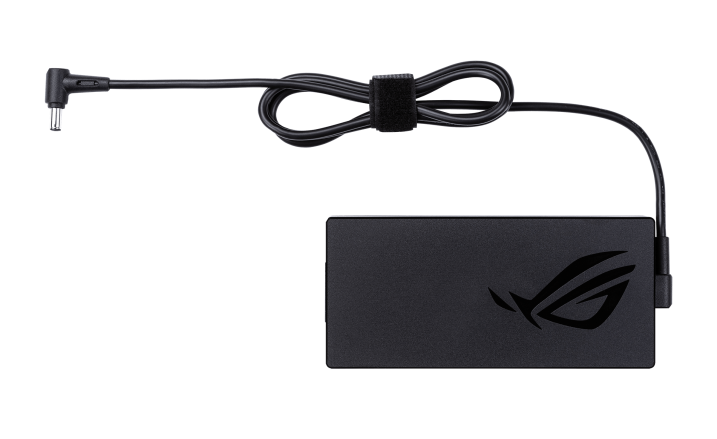The ASUS ROG Network Adapter is a powerful tool for gamers and professionals alike. It is designed to provide a seamless and reliable internet connection, allowing for smooth streaming, low-latency online gaming, and lightning-fast downloads. In this article, we will explore the various features and benefits of the ASUS ROG Network Adapter, as well as how to troubleshoot common issues.
Firstly, it is important to ensure that the wireless function is activated. If the adapter is not working, it may be due to a simple oversight such as the wireless function being turned off. To activate the wireless function, press the blue “FN” key and the “F2” key simultaneously, then release. This key combination is the “Hot” key to toggle the Wi-Fi adapter on or off.
If this does not resolve the issue, it may be necessary to restore the BIOS settings. This can be done by accessing the BIOS setup utility and selecting the “Restore Defaults” option. This will reset the BIOS settings to their original state, which may resolve any conflicts or issues that are preventing the adapter from working properly.
If the issue persists, it may be necessary to turn the computer off completely and then restart it. This can help to clear any temporary files or settings that may be causing the issue.
Another useful tool for troubleshooting network issues is the Wireless Diagnosis in MyASUS. This can be accessed by selecting the “MyASUS” app and then clicking on the “Diagnosis” tab. This will run a diagnostic test to identify any issues with the adapter or network connection.
Updating the Wireless and Bluetooth drivers through Device Manager can also help to resolve any issues. To do this, open Device Manager, locate the wireless adapter, right-click on it, and select “Update Driver Software.” This will search for the latest drivers and install them automatically.
If none of these solutions work, it may be necessary to reset the network. This can be done by opening the Control Panel, selecting “Network and Sharing Center,” and then clicking on “Change adapter settings.” From there, right-click on the adapter and select “Disable.” Then, right-click on it again and select “Enable.” This will reset the network and may resolve any issues.
It may be necessary to reset the internet browser. This can be done by opening the browser settings and selecting “Reset settings” or “Restore defaults.” This will clear any temporary files or settings that may be causing issues with the internet connection.
The ASUS ROG Network Adapter is a powerful tool for gamers and professionals alike. By ensuring that the wireless function is activated, restoring BIOS settings, turning off and restarting the computer, running Wireless Diagnosis in MyASUS, updating drivers, resetting the network, and resetting the internet browser, users can troubleshoot any issues and ensure a seamless and reliable internet connection.

Fixing the Network Adapter on an Asus Laptop
If you are experiencing issues with the network adapter on your Asus laptop, there are several steps you can take to try and fix the problem. Here are some possible solutions:
1. Make sure the wireless function is activated: Check that the wireless function is turned on by pressing the Fn + F2 keys on your keyboard or by using the dedicated wireless button on your laptop.
2. Restore BIOS settings: Try restoring your BIOS settings to default by accessing the BIOS menu during startup and selecting the option to restore defaults. This may help resolve any conflicts with your network adapter.
3. Turn the computer off completely: Shut down your laptop completely and unplug it from any power source. Wait a few minutes and then turn the laptop back on to see if the network adapter is working properly.
4. Run Wireless Diagnosis in MyASUS: MyASUS is a software utility that comes pre-installed on Asus laptops. Open the app and run the Wireless Diagnosis tool to check for any issues with your wireless connection.
5. Update the Wireless and Bluetooth drivers through Device Manager: Open the Device Manager by pressing the Windows key + X and selecting Device Manager from the menu. Locate the Wireless and Bluetooth drivers, right-click on each one, and select Update Driver. Follow the prompts to complete the update.
6. Reset network: Open the Command Prompt by pressing the Windows key + X and selecting Command Prompt (Admin) from the menu. Type the following commands one at a time, pressing Enter after each one: ipconfig /flushdns, nbtstat –R, nbtstat –RR, netsh int ip reset c:\resetlog.txt, netsh winsock reset. Restart your laptop to see if the network adapter is working properly.
7. Reset the internet browser: If you are having issues with internet connectivity, try resetting your internet browser. Open the browser settings and locate the option to reset the browser to its default settings. This may help resolve any issues with your network adapter.
By following these steps, you may be able to fix any issues with your Asus laptop’s network adapter. If the problem persists, you may need to contact Asus customer support for further assistance.

The Benefits of Using an ASUS Network Adapter
ASUS network adapter is a device that allows a computer to connect to a wireless network. Specifically, the ASUS PCE-AC88 is a high-performance Wi-Fi PCI Express® (PCIe®) adapter designed for desktop PCs. It features dual-band connectivity, supporting both 2.4GHz and 5GHz bands, with combined wireless speeds of up to 3100Mbps. This is achieved through the use of NitroQAM™ (1024-QAM) technology, which provides 60% faster speeds than 3×3 adapters.
The ASUS PCE-AC88 is designed to provide exceptionally smooth streaming and low-latency online gaming. Its 4×4 antenna design ensures a strong and stable wireless connection, while the heatsink helps to dissipate heat, ensuring reliable performance over extended periods of use.
The ASUS PCE-AC88 is an excellent choice for anyone looking to upgrade their desktop PC’s wireless connectivity. It’s high-speed performance and advanced features make it ideal for demanding applications such as online gaming, streaming HD video, and large file transfers.
Enabling WiFi Adapter on ASUS BIOS
To enable the WiFi adapter on an ASUS BIOS, follow these steps:
1. Turn on your ASUS laptop or computer.
2. Press the “Delete” key or the “F2” key to enter the BIOS setup utility. The key may vary depending on your ASUS model.
3. Use the arrow keys to navigate to the “Advanced” tab.
4. Navigate to the “Onboard Devices Configuration” option.
5. Locate the “WiFi” option and make sure it is set to “Enabled”.
6. Press the “F10” key to save your changes and exit the BIOS setup utility.
If the above steps don’t work, you can also try resetting the BIOS to its default settings by selecting the “Load Setup Defaults” option within the BIOS setup utility.
Note: Please be careful while making changes to the BIOS settings, as any incorrect settings may cause your computer to malfunction. It is recommended to consult the ASUS user manual or technical support for further assistance.
Conclusion
The ASUS ROG network adapter is a high-performance device that provides reliable and fast wireless connectivity for desktop PCs. With its advanced NitroQAM technology, the adapter delivers impressive wireless speeds of up to 2100Mbps on the 5GHz band and 1000Mbps on the 2.4GHz band, making it ideal for online gaming, streaming, and other bandwidth-intensive activities. If you are experiencing issues with your ASUS ROG network adapter, there are several troubleshooting steps you can take, including restoring BIOS settings, updating drivers, resetting your network, and resetting your internet browser. By following these steps, you can help ensure that your ASUS ROG network adapter is working at its best and providing you with the reliable wireless connectivity you need.







